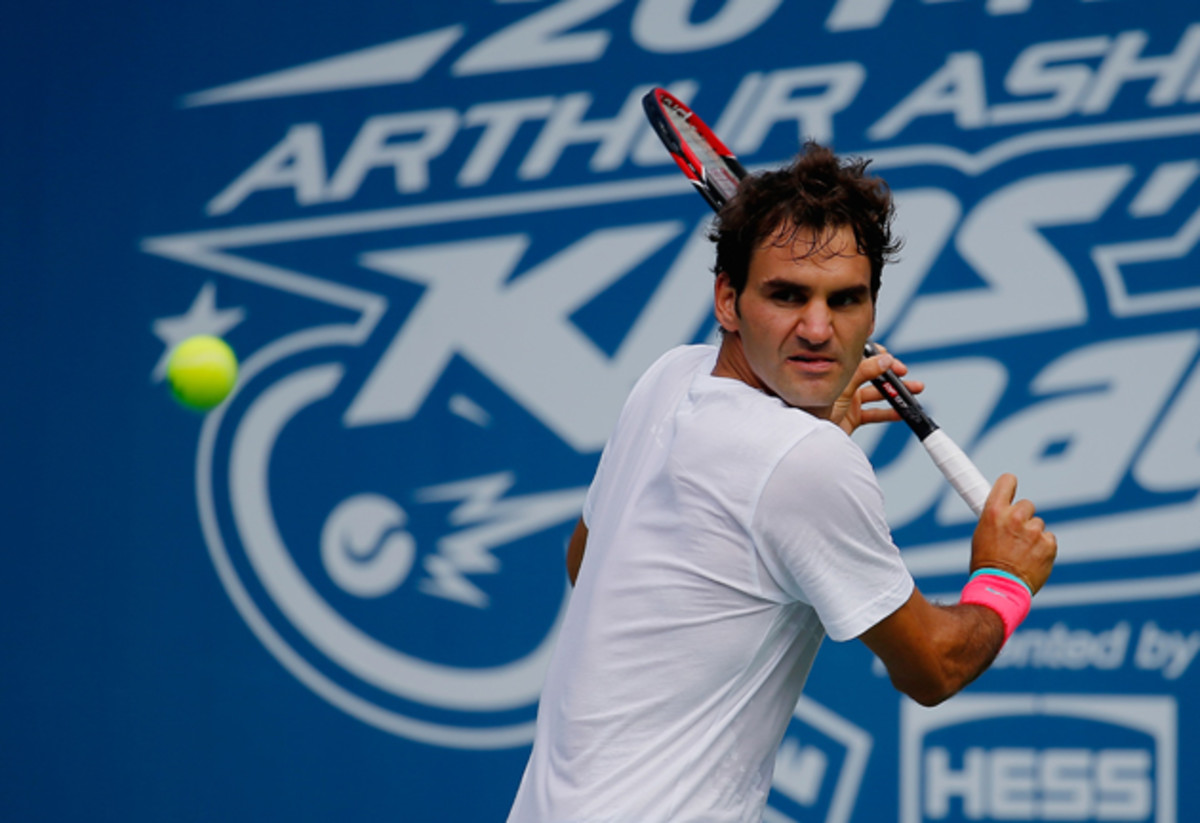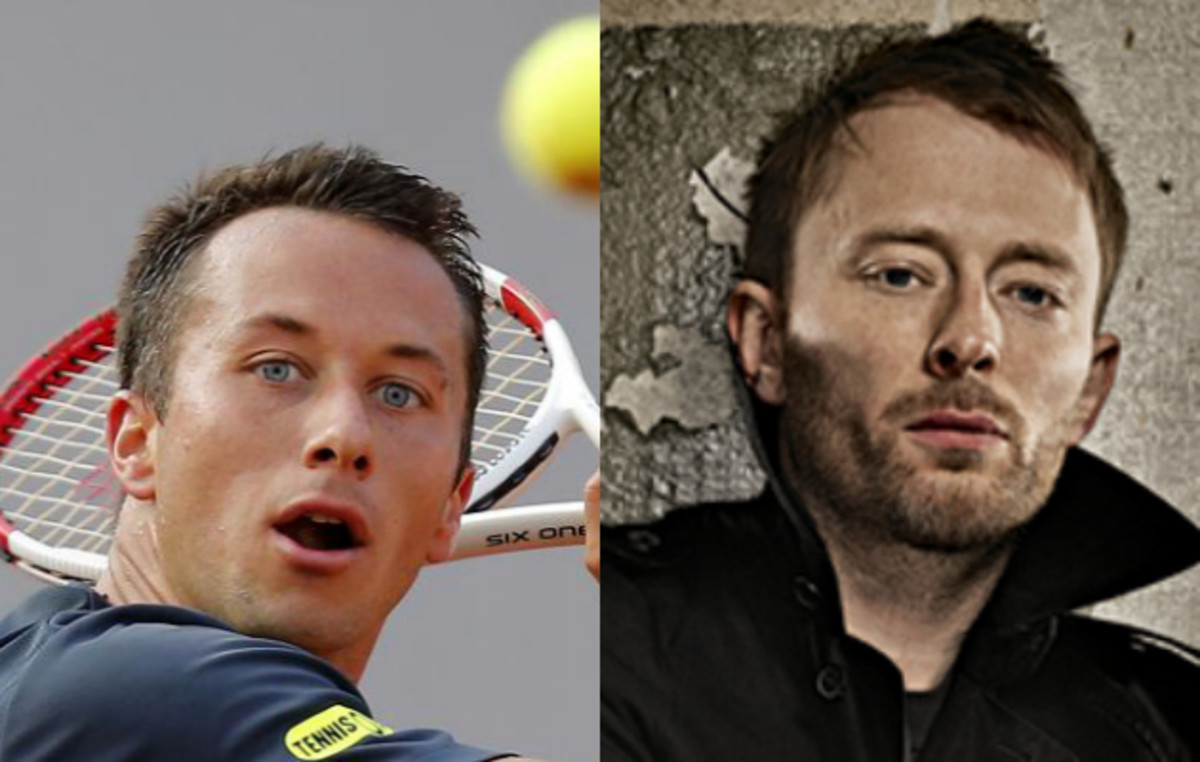Tennis' iron man Roger Federer looks to maintain his long-term durability

NEW YORK -- Today’s rackets are made from unpronounceable chemical compounds, carbon fiber-reinforced polymer and the like. The strings, according to tennis industry guides, are made of “polyolefins, which are polymers such as polyethylenes and polypropylenes, comprised of alkene functional groups.” But after two days of play at the U.S. Open, a much more common and core element looms large: iron.
Despite its depiction in pop culture, tennis is not a game of softness. It’s hard. Damn hard, in fact, and never more so than right now. Durability is essential, and fitness is as vital as accuracy and power. Tennis’ Iron Man, Roger Federer, takes the court on Tuesday night in his 60th straight major event. For all the standards he has set -- his record keeping, as it were -- this ranks as one of his more meaningful benchmarks. For 15 straight years, he has been fit to play at each of the four majors. Feliciano Lopez is next among players with 51 straight major appearances. David Ferrer is third with 48. That's more than a decade of making every shift.
These streaks have been thrown into particularly sharp relief lately. Two former U.S Open champions -- Juan Martin del Potro and Rafael Nadal -- are non-starters. Same for Li Na, who won the previous hard court Major, but is now injured. Talented young players such as Kei Nishikori -- who won on Tuesday, despite missing most the hardcourt season -- have been stifled by injury. Same for Alex Dolgoplov, who played so well earlier this year, but is recovering from summer knee surgery.

Even the players who show up can be undone by fragility once the match starts. Jack Sock, the great American hope, disappointed on Tuesday, lasting three sets against Pablo Andujar before retiring with a combination of a right calf injury and acute fatigue.
“There was a ball like late in the second set where I slid out like I usually do and just felt a little strain in my calf, outside of my right calf,” Sock explained. “Just hindered my play and I wasn't able to go 100%, so I decided to stop.”
Watch: Novak Djokovic threads the needle with laser forehand
He hopes to be back for doubles, as he and partner Vasek Pospisil -- who's also been prone to injury -- try and build on their Wimbledon title. But given that the litany of injuries that has undercut Sock's progress and his history of wilting in matches -- to wit: his defeat in Cincy just two weeks ago -- one wishes he were a bit, well, harder.
What makes Iron Men? Physique is part of it. A lumbering player like Rafael Nadal is going to be more injury-prone than, say, Federer. Lopez and his negligible body fat is better suit for difficult conditions than, say, Jo-Wilfried Tsonga, who is built like a lineman. Style factors in as well. Defensive players like Nishikori, who turn every rally into trench warfare, will struggle physically in a way that colleagues who play shorter points won’t. Luck plays a role, too. Tommy Haas, as star-crossed as they come -- he’s currently on the sidelines with his fourth shoulder surgery -- was once injured tripping on a ball.
We should be asking why tennis has become so dangerous to the body; whether the modern equipment and its fancy polymers and space-age technology aren’t at odds with health and fitness.
But, for now, instead of condemning the injured, we commend the durable and we salute the Iron Men. And wonder if it’s coincidence that Federer, Feliciano, and Ferrer all start with the same two letters/chemical symbol: FE.
Quick thoughts
• WTA note: 32nd seed Shuai Zhang has never won a match at a Major. (Zhang lost 6-1, 6-2 to Mona Barthel on Tuesday.)
• It was one of those end-of-the-day matches that got lost in the schedule, but it was disappointing to see Donald Young go down meekly to Blaz Kavcic in straight sets on Tuesday. This was a question of Young losing, not the opponent winning.
• A day after taking a set from No. 2 seed, Simona Halep, on Monday, Danielle Collins is back at campus at UVA. Here’s to hoping she meets Mark Edmondson.
Mailbag
Have a question or comment for Jon? Email him at jon_wertheim@yahoo.com or tweet him @jon_wertheim.
I can't believe you picked Tomas Berdych to make it to the semifinals. He's had a dismal hard court season. Hats off to you if he makes it that far, but personally, I predict an early exit. In fact, I could see a first round upset by Lleyton Hewitt. If I had to predict for next week’s final, it would be Roger Federer, David Ferrer.
-- Kris Snajder, Connecticut
• Berdych is -- and has been for his career -- the wildest of wild cards. You expect to see him break through and he flames out. You expect him to lose early and he beats Federer. Two years ago, he reached the semis. Last year, it was the fourth round. He’s made the middle weekend of seven of the last eight Majors. I guess we’ll see. Ferrer/Federer is certainly reasonable. Six months ago, it looked liked Ferrer’s odometer had finally turned over, but suddenly, he’s back playing top five ball.
Daily Data Visualization: Serena Williams' serve and return analysis
I saw your piece on Tennis Channel about tennis’ best closer, but you never really gave an answer. Who are your best closers?
-- Mark, Los Angeles, Calif.
• Thanks for watching. Our point was this: You can be outscored in the fourth quarter and still win the football or basketball game. You can double bogey the 18th hole and still win in golf. You can lose the final round on the judge’s scorecards and still win the fight. But tennis is different.
There is no clock to run out, no insurmountable lead. You have to get to match point, and then you have to take it. As a wise man once said: ABC…Always be Closing.
Mark Knowles picked Bjorn Borg, Rafael Nadal and Pete Sampras, in that order. I would go with Serena Williams. Lately she’s made life difficult on herself, but for most of her career, she’s been a) a terrific frontrunner. Give her a lead and she won’t gag it. b) a player with a preternatural ability to seal the deal and elevate her play at the key moments.
But that’s been lacking in 2014, especially at the Majors. When she can channel her inner Mariano Rivera and close out matches, it will bear heavily on her success at the U.S. Open.
• Done.
Shots, miscellany
• The 2014 ITA/Arthur Ashe Jr. National Leadership and Sportsmanship Award winners were announced for all three NCAA divisions, the NAIA and junior/community college levels.
• John Mikelich has LLS: No. 22 Philipp Kohlschreiber and Thom Yorke, the lead singer of the band, Radiohead.

